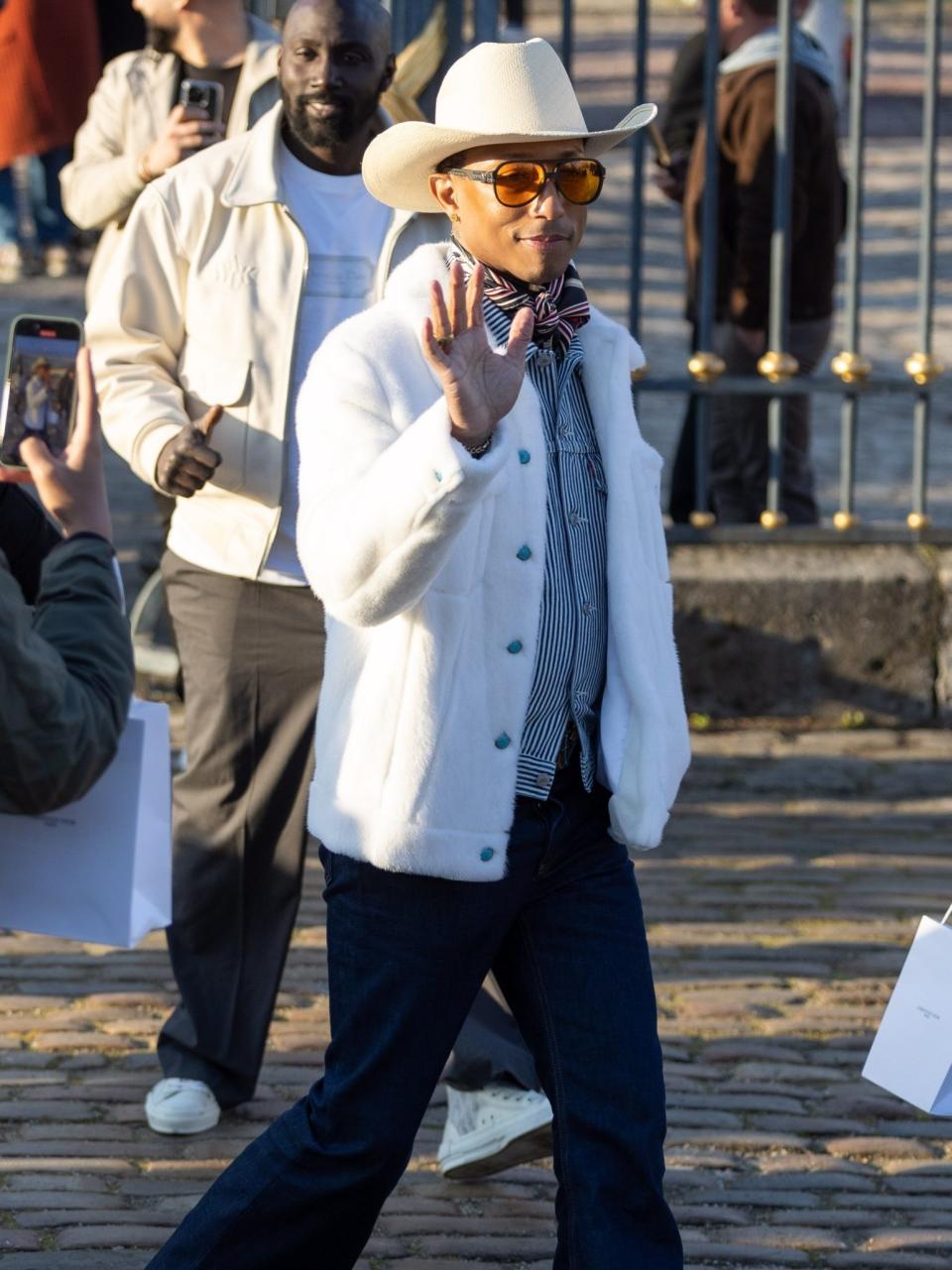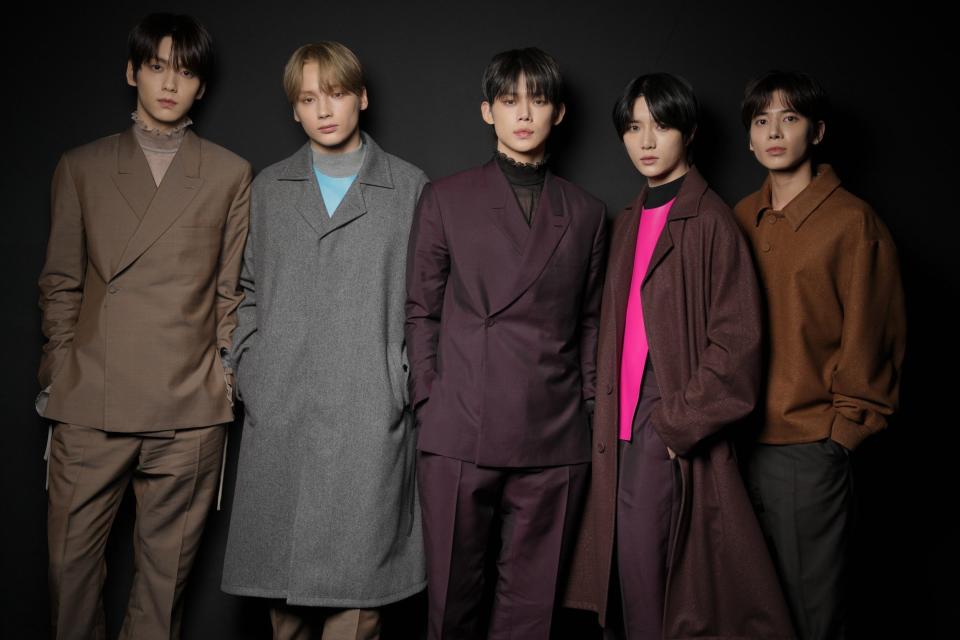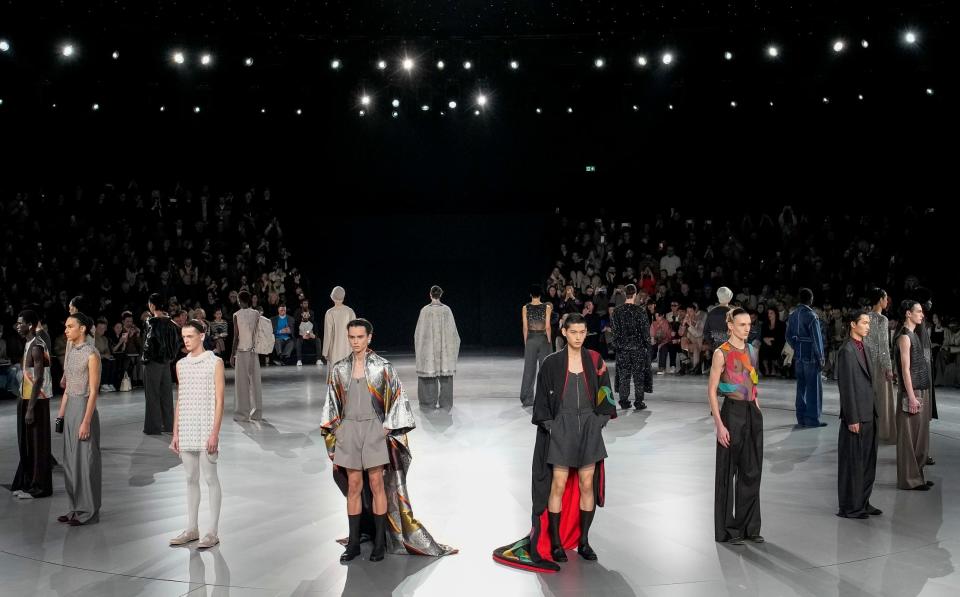Princess Eugenie attends her first Paris Fashion Week show, Dior’s homage to Rudolf Nureyev

Russian ballet dancer Rudolf Nureyev was a louche, over-the-top character, on stage and off – so much so that 30 years after his death, from AIDS-related complications, he still regularly surfaces as an influence in fashion. Such was the case at the Christian Dior 2024-25 men’s haute couture and ready-to-wear show on Friday, designed by men’s artistic director Kim Jones, and staged in an enormous big top mounted in the courtyard of the 18th century École Militaire in Paris.


Before a front row stuffed with bold-faced names – including Kate Moss, who this week crossed the half-century mark; her 21-year-old daughter Lila; F1 driver Lewis Hamilton; the K-Pop band Tomorrow x Together; The Crown actor Luther Ford; Louis Vuitton menswear designer Pharrell Williams, sporting a white cowboy hat and fur bomber from his collection presented earlier this week; and Princess Eugenie, who was attending her first Paris fashion show dressed in Fendi, also designed by Jones, who she described as “a good friend” – he sent out a flurry of Proustian robes, operatic capes, embroidered tunics and pouffy men’s shorts that were as camp and theatrical as Nureyev’s originals half a century ago.



But slipped in discreetly between all that foppery was some handsome tailoring, in fine English suiting wools and lush cashmeres and in a muted palette of chocolate, plum and taupe. Jones said these pieces were rooted in the work of Yves Saint Laurent at Dior in the late Fifties – surprising, given Saint Laurent only led the house for two years, before being drafted into the Algerian War.


But mine those six collections Jones does, reinterpreting Saint Laurent’s vents, pleats and necklines for women in men’s clothing without sacrificing masculinity. Jones has his own signature silhouette, too; the Oblique, with its “extended double-breasted wrap” jacket, as the house describes it, which he introduced in his first Dior collection in 2018. In the thick of throwback references, like Seventies body-skimming jumpers and denim lounge suits, the Oblique looks resolutely of today.


So were the accessories, such as diamond ear cuffs, gold key charm earrings (a sure-to-be hit), and the man-bags – offered as clutches, fanny packs and “camera bags” – and made in a macro-version of the house’s signature caning leather.

Jones turned to Nureyev for two reasons. Firstly, because Nureyev’s Sixties dance partner, the Royal Ballet prima ballerina Margot Fonteyn, was a dedicated Dior client. One of her most famous gowns, the silver tulle and sequin “Debussy” column, made by Dior for her in 1950, now resides in the Fashion Museum Bath. Jones splashed reinterpretations of those shimmery “Debussy” embroideries throughout the collection, including on haute couture capes and kimonos, and even a grey knit beanie.

Secondly, because Jones’s uncle, the photographer Colin Jones, who hailed from the East End and joined the Royal Ballet School as a dancer in the early Fifties, was assigned by Time-Life in 1966 to chronicle a day in the life of Nureyev in London. The designer published a small monograph of his uncle’s pictures, and gifted it to the Dior show’s attendees. Colin Jones died in 2021, at the age of 85. The book, and the show, were an apt homage.
More from the show










